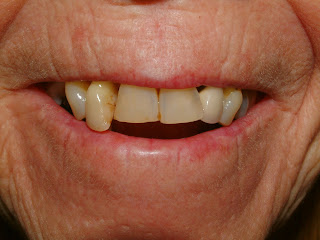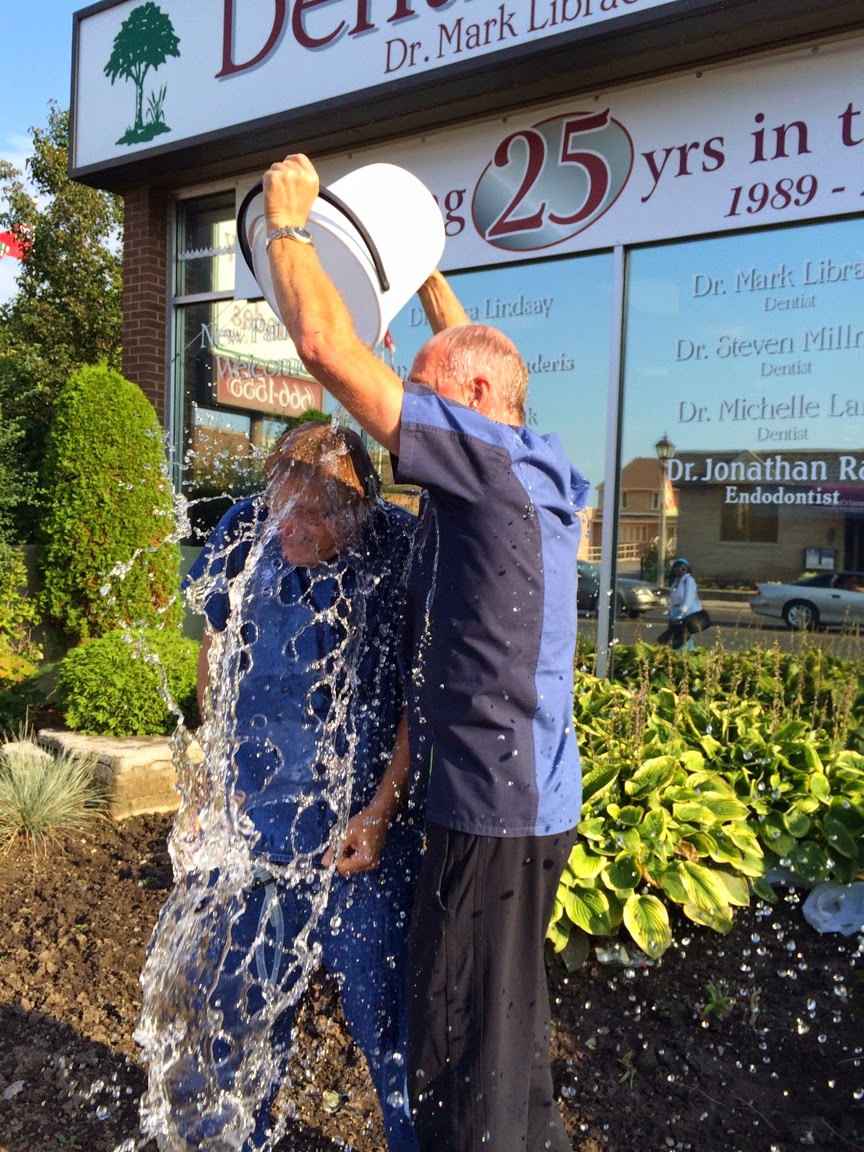Eleanor underwent a few procedures to achieve his new smile. This included dental implant on extruded anterior tooth with new implant crown and veneer on adjacent front tooth.
Why was this patient a good candidate for this procedure?


Eleanor's chief complaint was the "drop" of her tooth below the line of the adjacent teeth, which created a very unfavorable aesthetic situation. Also, the tooth already had a very old crown on it which had a poor match of color to her front teeth. Upon clinical and x-ray examination, it was evident that the tooth wasn't healthy and also had a very short root, most probably as a cause of the roots being resorbed.
How did you develop a plan to treat her concerns?
We decided after completing a through clinical, radiographic and aesthetic examination, that Eleanor would benefit from having the tooth removed, a dental implant to be placed to replace the missing tooth and a veneer to cover the adjacent tooth for perfect color match.
Was her treatment out of the ordinary?
Although treatment was not out of the ordinary, it is a very challenging and complicated treatment. Every effort needs to be made during the surgical and dental procedures to obtain perfect position of the implant with the final objective of achieving the most aesthetic outcome (and of course functional as well).
How long did this transformation take?
Eleanor's treatment took just under one year to complete to achieve optimal healing. During the
healing phase she had a transitional crown positioned for immediate aesthetic improvement.
What Steps do these procedures involve?
First, the tooth had to be removed and a bone replacement graft was placed in order to preserve the bone and maintain a proper future " housing" for the root implant. During this time, a temporary and provisional denture (or bonded bridge) is done, which is quite esthetic. It's main goal is to allow for the bone underneath to heal and have a nice temporary replacement while healing occurs. Once this healing period is done (usually anywhere between 4-6 months), a titanium dental implant is placed with a surgical procedure. This implant is allowed to heal for 4 months, during which time it "integrates" or becomes part of your jaw. Once this is completed, a minor procedure to uncover the implant is done and the crown or "cap" is done, at the same time as the veneer on the adjacent tooth, maximizing a " color match" for the two porcelain teeth.
Dentist Periodontology & Implant Dentistry
Jonathan Mursic Connie
5 Axis Lab Treatment Coordinator



































.JPG)
